Lumbar osteochondrosis is one of the most common and commonly diagnosed types of osteochondrosis, also known as "sciatica."The incidence of this disease is very high, with lumbosacral radiculitis being diagnosed in approximately 82% of cases in patients who visit a doctor with severe low back pain.
disease description
Sacral or lumbar osteochondrosis occurs equally frequently in women and men and is most common in middle-aged and older adults.Medical practice shows that this particular disease ranks first among the main causes of temporary or permanent disability, and in some cases even disability.This is why the pathology must be treated with extreme caution, since osteochondrosis poses a serious risk to human health.
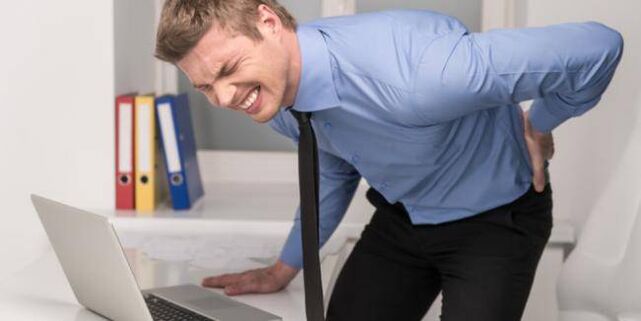
The lumbar region is the name given to the portion of the spine consisting of 5 vertebrae designed to connect the sacral and thoracic regions.Osteochondrosis of the lumbar spine is a pathological change in which flexibility rapidly decreases and the natural anatomy of the intervertebral disc is altered.They gradually deform.
The basis of radiculitis is the slow destruction of the vertebrae, loss of moisture and elasticity, and a decrease in shock-absorbing capacity.Gradually, the space between the vertebrae shrinks and the discs stiffen, causing nerve roots to become compressed.This process is accompanied by severe spasmodic pain in the lower back.
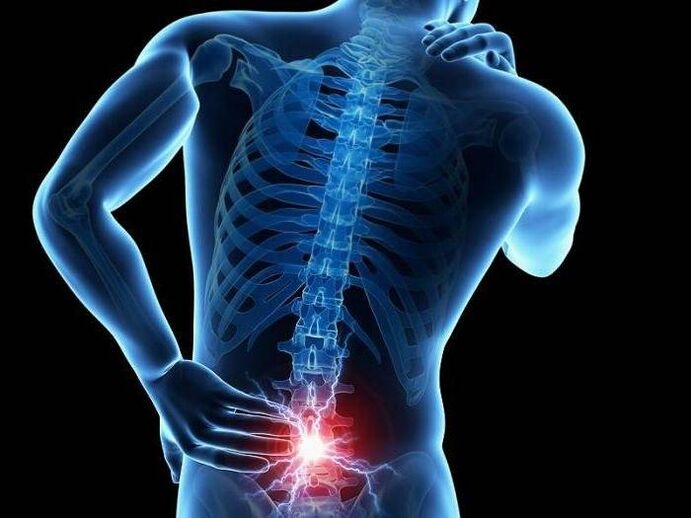
How dangerous is osteochondrosis and its stages?
The progression of the disease is accompanied by degenerative dystrophic changes that, over time, can lead to complications such as herniation and disc herniation.This degenerative change may be the primary cause of leg paralysis.
Lumbar osteochondrosis can be accompanied not only by disc herniation or herniation, but also by other equally serious visceral and systemic diseases.One of the most common complications is sciatic nerve compression, accompanied by severe pain in the lower back and numbness in the extremities.
Radiculitis can also cause other serious consequences - spondyloarthropathy, osteophytes, spondylosis, stenosis, claudication, spinal curvature.The disease can also trigger pathological processes in the urogenital and reproductive areas; in women, inflammation of the uterus and ovaries; in men, it leads to various potency problems.
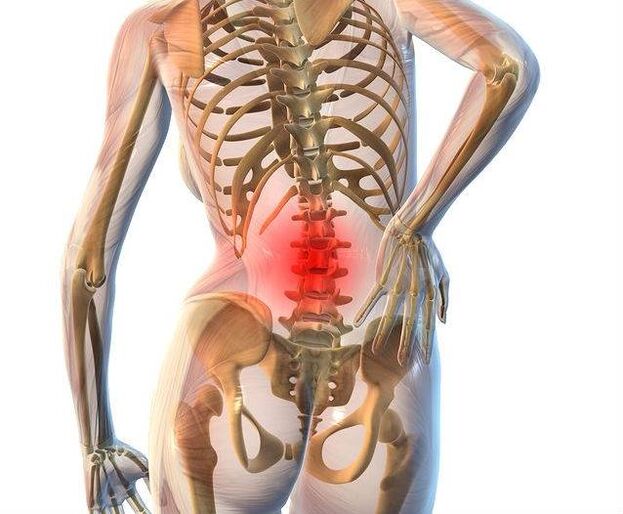
Lumbar osteochondrosis is divided into several stages:
- The first stage of radiculitis is the "mild" stage, in which lumbar or sacral pain remains mild and occurs only with physical activity.In the first stage, the destruction process of the vertebrae is in its initial stages.
- The second stage is accompanied by active destruction of the annulus fibrosus and narrowing of the intervertebral space.This can cause pinching of the nerve and cause severe pain.
- The third stage - the end of the annulus fibrosus is destroyed and intervertebral hernia occurs.The spine is significantly deformed and twisted, losing its normal anatomical shape.
- The fourth stage of the disease is the most severe.At this stage, the person is no longer able to walk normally; the fourth stage usually ends in disability.
Symptoms of lumbar osteochondrosis
Symptoms and treatment depend on the stage of the disease.
In the first stage, people usually don't notice the first signs of the disease.Mild pain and discomfort may occur in the lower back when making sharp turns or walking.Additionally, pain often occurs after sitting or standing in one place for long periods of time.
The main danger during this period is that the symptoms are not obvious enough and one can simply ignore them, leading to rapid progression of osteochondrosis.
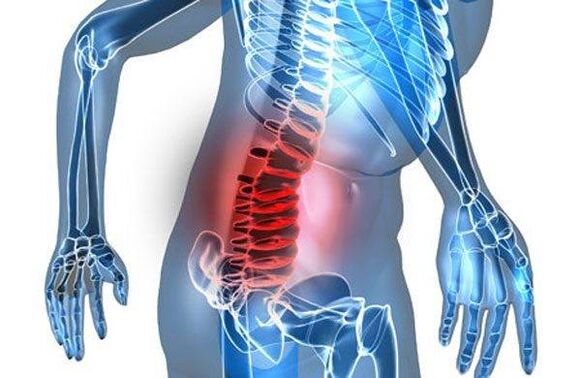
The second stage of radiculitis is accompanied by a reduction in the space between the vertebrae and, as a result, severe pain in the lower back and sacrum that can radiate to the groin and lower limbs.
In the third stage, osteochondrosis is characterized by clear symptoms - severe pain, back spasms, decreased mobility of the vertebrae, and the onset of pathological changes in the internal organs and systems.This may lead to genitourinary and gynecological inflammatory problems.
Symptoms of the fourth and most severe stage of the disease include marked deformation of the spine, which can bend sideways or forwards, and persistent, severe pain that is especially aggravated when any physical movement is attempted.Also during this stage, muscle and ligament swelling, loss of sensitivity, and numbness in the lower extremities may occur.
modern treatment methods
Comprehensive treatment of lumbosacral vertebrae osteochondrosis is recommended - with the help of medications, physiotherapy methods, exercise therapy and herbal medicine.In the most severe cases, surgery is used.
Treatment aims to achieve the following goals:
- Reduces pain in the lumbar and sacral areas.
- Eliminate inflammatory processes in diseased areas.
- Eliminates pathological tension in muscle tissue.
- Activate blood circulation in the lumbosacral area of the back.
- Improves spinal mobility and normalizes sensitivity in the lower limbs.
Medical treatment of radiculitis is an essential element in the comprehensive treatment of lumbosacral osteochondrosis.For therapeutic purposes, several drugs are most commonly prescribed:
- Painkillers are used to relieve pain.But we must remember that painkillers do not take away the pain and do not cure the cause.
- In most cases, doctors prescribe chondroprotectants, which are designed to improve the metabolic processes of cartilage fibers and prevent them from further deformation.
- NSAIDs - used to relieve pain and swelling, release compressed nerve endings, and relieve the inflammatory process in affected tissues.
- Medications in the muscle relaxant category are used to normalize muscle tone.
- In some cases, medications with diuretic effects may be prescribed to help relieve swelling of the affected tissue.
- To activate blood circulation in the lumbosacral spine, drugs with vasodilatory properties can be taken.
- Calcium supplements are often used to increase the strength of bone and cartilage tissue.
Topical medications in the form of ointments, creams and lotions are very effective during the first and second stages of the disease.
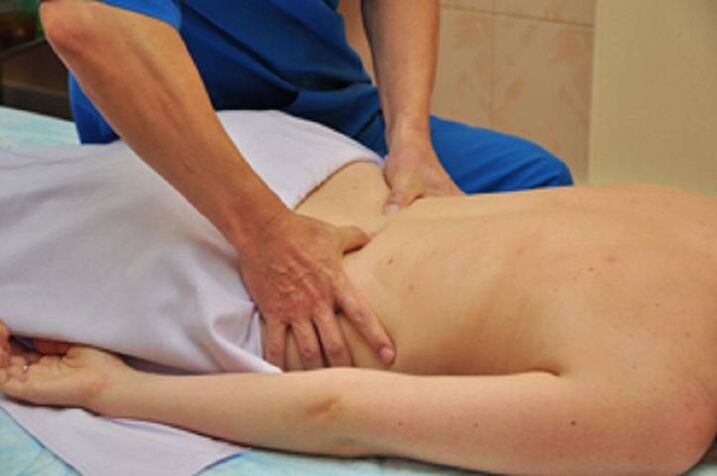
traditional method
Traditional medicine offers a number of different methods to effectively treat osteochondrosis.The most effective methods are considered various types of friction, massage and compression.But it should be remembered that traditional methods are effective only in the initial stages of the disease.
- One of the most famous recipes is cabbage dressing.To do this, cut off all the veins on the surface of the cabbage leaf, then lightly tap the leaf with a hammer and attach it to the lower back.Secure the compress with a wide scarf, handkerchief or gauze.It is recommended to change the cabbage leaves several times a day.
- Grate 3-4 cloves of garlic with a garlic press, squeeze the juice from the resulting garlic with a cheesecloth, separately melt 100 g of lard in a water bath.Mix the resulting components in a 1:2 ratio and stir.The composition is used for therapeutic massage and friction.
- One tablespoon of red pepper powder should be poured into 250 ml of vodka, and the container with the medicine should be placed in a dry and dark place for a week.Folk remedies use rubbing method.
- Horseradish rub is prepared in the same way.Squeeze out the grated horseradish roots and mix the resulting juice with an equal amount of vodka.This mixture is used for regular rubbing.
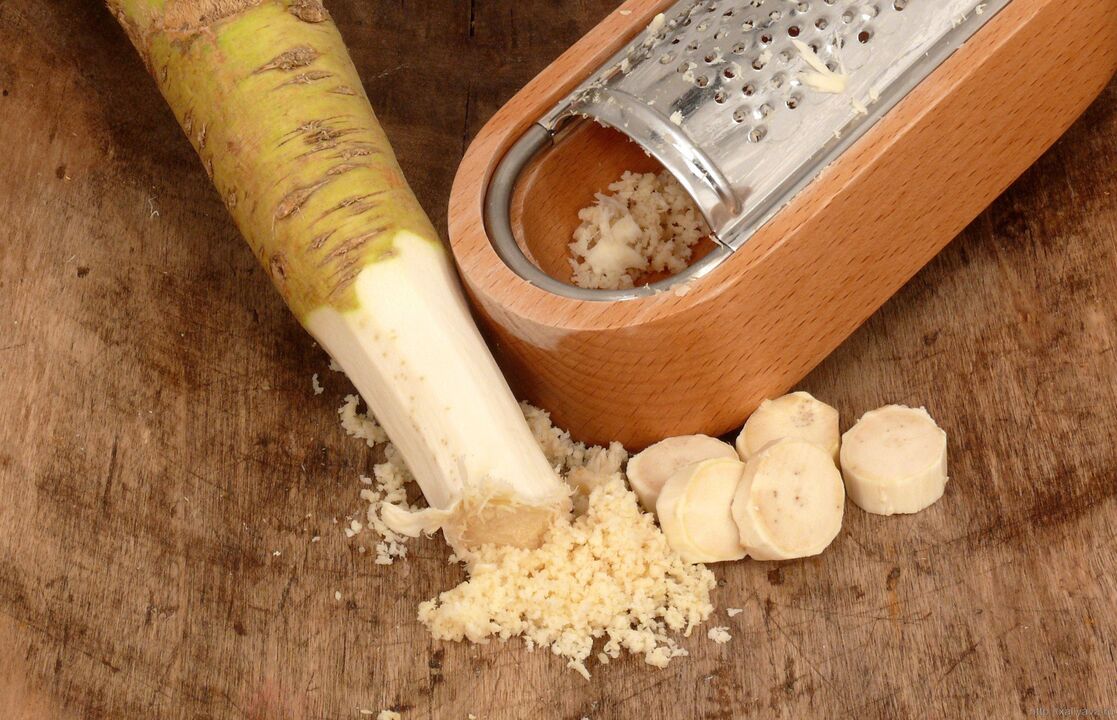
Exercise therapy (physical therapy)
Exercise therapy for lumbar osteochondrosis can eliminate pain, improve the condition of muscle and cartilage tissue, restore the mobility of the spine, significantly strengthen the musculoskeletal corset, and "unload" the lumbar spine.
Exercises for osteochondrosis can be performed only if the patient is not bothered by severe pain in the back.The exercises can be varied - forward and backward from a standing position, bending to the left and right, raising the arms, placing them behind the head and tensing the abdominal muscles.At the same time, all therapeutic exercises are absolutely carried out under the supervision of experts.
What should you do if osteochondrosis is suspected?
Radiculitis is an extremely dangerous disease that often begins without people noticing.The danger of radiculitis is that, without the necessary treatment, this disease can have the most unpleasant consequences - even leading to paralysis of the legs and curvature of the spine.
That is why when the first signs of the disease appear, it is necessary to consult an orthopedic surgeon, who will prescribe the best treatment plan.Remember, the sooner you start treatment, the sooner you can achieve positive results and restore your spine to health.






















